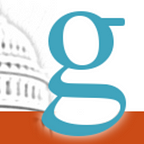Local Journalism Sustainability Act would encourage subscriptions and discourage layoffs at local newspapers
Would government support of private media violate the spirit of the First Amendment?
Context
The journalism industry’s 21st century metrics, such as subscriptions and employment, show that this era was hardly proven the industry’s most profitable even before the pandemic hit. But with the addition of the economic crash of 2020, the financial situation is particularly precarious for many publications. Local publications have fared particularly poorly.
What the bill does
The Local Journalism Sustainability Act would create three federal tax credits to encourage local media. The bill defines a local publication as one where the majority of the readership resides within a 200 mile radius.
- A tax credit for a subscription to a local newspaper, worth up to $250 per year.
- A tax credit to encourage local media to hire and pay journalists, worth up to $12,500 per quarter (equivalent to $50,000 per year).
- A tax credit to incentivize businesses advertising with local media, worth up to $5,000 per year.
It was introduced in the House on July 16 as bill number H.R. 7640, by Rep. Ann Kirkpatrick (D-AZ2).
What supporters say
Supporters argue that the bill helps an industry vital to the American way of life, an industry whose freedoms are protected by the freedom of the press provision of the First Amendment.
“Local journalism is a bedrock pillar of communities across the United States. Unfortunately, journalistic endeavors throughout the country are facing major economic struggles that put the future of many publications in serious jeopardy,” Rep. Kirkpatrick said in a press release. “These struggles existed before COVID, but the pandemic has only made them more severe.”
“We need to make sure these publications can sustain themselves through this crisis and beyond,” Rep. Kirkpatrick continued, “and I believe the credits in this bill make significant progress in providing a pathway to that sustainability.”
What opponents say
Opponents counter that such a bailout would breach the firewall that’s supposed to exist between independent media and government, by creating a mechanism in which journalists rely financially on the politicians whom they’re supposed to hold accountable.
“I’ve always loved the way newspapers smell and the rustle they make as you course through their pages, and I’ve always enjoyed returning from vacation to plow through a pile of yesterday’s papers and catch up on crime, corruption and culture,” Politico senior media writer Jack Shafer wrote in April. “Nobody will miss newspapers more than me when they finally vanish.”
“The imposition of government money into newsrooms would inevitably bring with it the potential chill of political interference,” Shafer continued. “Politicians — usually Republicans like President Donald Trump — routinely issue threats to defund NPR and PBS every time they object to the outlets’ coverage. Do we really want to make the print press beholden to such political whims?”
Odds of passage
The bill has attracted 49 bipartisan cosponsors: 30 Democrats and 19 Republicans. It awaits a potential vote in the House Ways and Means Committee.
The bipartisan cosponsorship indicates that congressional enactment may be possible, although it also seems possible that President Trump — with his frequent calls of “fake news” — would reject or veto the measure. More likely, the provision would be included in a larger omnibus COVID-19 relief bill.
This article was written by GovTrack Insider staff writer Jesse Rifkin.
Like our analyses? Want more? Support our work!
